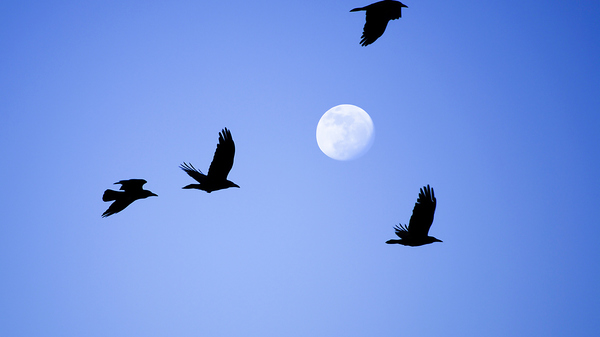The Micro Death Moon of 2024
When the Sun, Earth, and Moon almost perfectly align on March 25 at 07:00 UTC for a Full Moon, it also coincides with a whole bunch of lunar events.

This month’s Full Moon holds significance in many ways.
©iStockphoto.com/Lorado
Here are six things that make the March Full Moon significant:
1. It Will Be Eclipsed
On the night of March 24-25, the Moon will be eclipsed by Earth’s outer, lighter shadow, its penumbra, resulting in a penumbral lunar eclipse.
It can be difficult to spot Earth’s light penumbral shadow on the Moon’s surface, but if you know the timings and look closely, it might be visible from the night side of the globe.
An eclipse never comes alone: next up in this eclipse season is a total solar eclipse on April 8.

Earth’s penumbral shadow is not a single shade—as can be seen in this telescope view from timeanddate’s live stream of a penumbral eclipse in November 2020. The shadow across the Moon gradually darkens from the left edge, which is outside the shadow, to the right edge, which is closest to the umbra.
©timeanddate.com
2. ...and It’s a Micro Full Moon
You may not easily see that the Moon is eclipsed, but there may be another reason why the Moon may seem a bit dimmer. This Full Moon is the last in a row of three Micro Full Moons, which can also make it look a fraction smaller and dimmer in the sky.
Because the Moon’s orbit is more an oval (known as an ellipse) than a perfect circle, the Moon is sometimes closer and sometimes farther from Earth. When the Full Moon is near its farthest point from Earth—its apogee—it is defined as a Micro Full Moon.
This month, the Moon reaches apogee a couple of days before it is full, on March 23 at 15:45 UTC, when it will be 406,294 km (252,460 miles) from Earth.
7 places to see the total solar eclipse 2024
3. It is Close to the Equinox
This Full Moon falls close to the March equinox: does that have any significance?
“In a way, the Full Moon does the opposite thing to the Sun,” says timeanddate astrophysicist Graham Jones.
“In the summer, the Full Moon passes low across the sky and is ‘up’ for less than 12 hours. In the winter, the Full Moon can be seen riding high in the sky, and it’s above the horizon for more than 12 hours.
“Around the equinox, the time between moonrise and moonset at Full Moon is in the region of 12 hours or so.”
Moonrise & moonset times for your city
4. The Death Moon Is upon Us
People have been naming the Full Moon as a way to track the change of months and seasons since ancient times, and the March Full Moon has many names.
It is known as the Death Moon in Old English after the purity of spring and to signal new life.
Most commonly known as the Worm Moon, after the worms coming out of the ground as it thaws in spring, Native American tribes named this Moon Crow Moon, Snow Crust Moon, and Sap or Sugar Moon. The Celts called it the Wind Moon and Plough Moon.

The Full Moon in March is called the Crow Moon by some Native American tribes and is known for signaling spring.
©iStockphoto.com/leningrad1975
5. Paschal Moon, Lenten Moon, Easter Moon
This Full Moon also holds significance in the Christian faith. Because it is the first Full Moon on or after March 21, it is also the Paschal Moon. This particular Full Moon is used to determine the date of Easter.
And speaking of Easter, the Anglo-Saxons called this the Lenten Moon. Lenten is derived from Germanic languages and means spring, and has also given its name to the Christian Lent period before Easter.
6. It Happens During Holi
This year, the Hindu spring festival Holi coincides with the penumbral lunar eclipse. It may affect how Holi is celebrated on March 25 as some people may have restrictions on what they do during an eclipse.
The Hindu calendar uses a lunisolar system, meaning that it takes into account the apparent movements of both the Moon and the Sun, as seen from Earth.